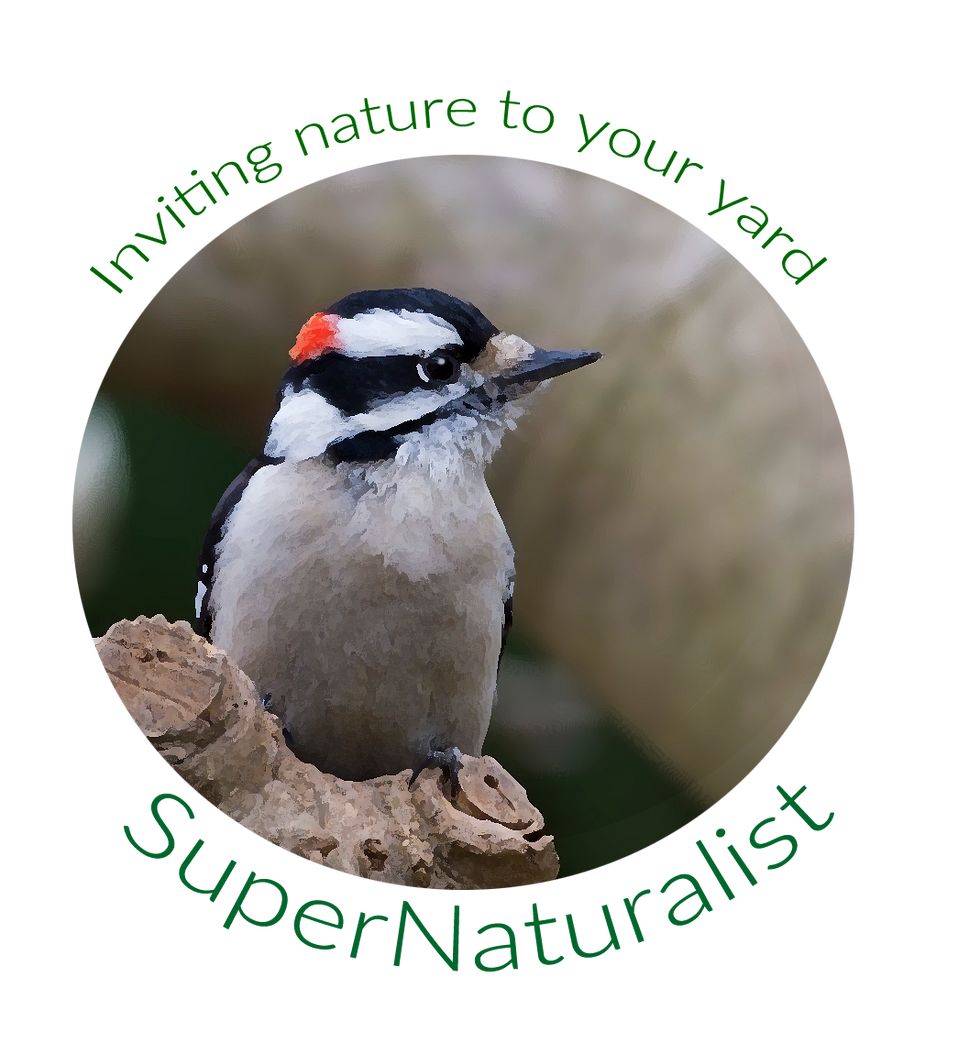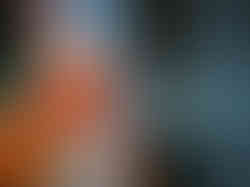Each day, hundreds of birds assess your property's potential for food, water, and a safe place to raise their young. When your backyard meets their needs, area birds choose your "habitat" to hunt, feed, and breed.
New habits for your new habitat
Optimize your backyard experience with these three small commitments:
1) Tour your property
Your property is integrated with nature; next, integrate yourself with your property! According to David and Austin Perlmutter, authors of Brain Wash, the calm stillness and exercise of daily nature walks reduces stress and relaxes your mind.
2) Observe
Pay attention to the activity in your yard. What changes do you notice? Is the feeder active? Are birds using the birdbath? Are you seeing birds hunting on your lawn or foraging your shrubs and trees?
3) Know your customers- learn your bird's names!
Knowledge of birds by species, sex differences, and vocalizations immerses you into their environment. This information creates the context for everything you learn about their behavior, seasonal diets, and nesting habits.
I can help with this!
The field guide below features the most frequent visitors to my property.
All images below were taken on my one-acre suburban property in eastern PA.
Eastern Bluebird
Left: Female, Right: Male
Profile
An insectivore prefers beetle grubs and caterpillars, will visit a suet or platform feeder with mealworms
Male and female feed young
Non- Migratory in PA
Nests in tree cavities and nest boxes
Field Observations
-Male and female feed young
-House Sparrows will evict bluebirds from their nest
-Will roost on wrought iron fixtures
Habitat destruction nearly eliminated Bluebirds from Pennsylvania. Fortunately, their populations have rebounded due to amateur naturalists adding thousands of nest boxes to their property.
Eastern Bluebird Call
Northern Cardinal
Left: Male, Right: Female
Profile
Diet includes insects, seeds, and fruit. Will visit feeder, prefers platform feeder or ground feeding
Up to three broods per year
Non- Migratory
Field Observation
-Will feed on adult Japanese Beetles
Northern Cardinal Call
Carolina Chickadee
Males and Females feature the same coloring.
Profile
Diet includes insects, seeds, and fruit. A frequent visitor to the feeder
Non- Migratory
Field Observation
-Often, the first bird to test a new feeder
Scientists consider chickadees to be North America's most intelligent songbirds.
[The Chickadees] system of communication is among the most sophisticated and exacting of any land animal
-Jennifer Ackerman, author of the Genius of Birds
Carolina Chickadee Call
House Finch
Left: Male, Right: Female (foreground)
Profile
Diet includes seeds, leaf buds, and fruit. A frequent visitor to the feeder
Non- Migratory
Field Observations:
-Frequently nests in hanging plants and wreaths.
-Will visit feeders in large social groups
-Grazes on red sedum
House Finch Call
Ruby-Throated Hummingbird
Female Ruby-Throated hummingbird. The male (not pictured) features a bright red collar.
Profile
Feeds on nectar and occasionally insects. Will come to a nectar feeder
Migrates south for winter
The smallest bird in PA
Beat wings at 60 beats per second
The only bird that can fly backward
Field Observations:
-Attracted to red tubular flowers
* Cardinal flower, tiger lilies, and cleome are the hummingbird's favorite nectar
sources in my yard
*Neighbors report trumpet vine, and native wisteria are hummingbird magnets
Ruby-Throated Hummingbird Call
Dark-Eyed Junco
Left: Female, Right: Male
Profile
Diet includes seeds and insects. Attracted to cast off birdseed below the feeder. Rarely visits the feeder
Common winter bird migrates from Canada
Field Observations
-Surfaces weed seeds by double scratching soil with both feet
-Will visit feeders in large social groups
Dark-Eyed Junco Call
Mourning Dove
Left: Female, Right: Male
Profile
Ground feeder exclusively seeds. Rarely visits the feeder
Partial migratory-will fly south when food is scarce
Field Observations
-The preferred prey of hawks and owls
-Wings make a whistling sound at takeoff to ward off predators
Mourning Dove Call
Nuthatch
Left: Female, Center, Male, Right: Female
Profile
Diet includes insects, seeds, and suet. A frequent visitor to the feeder
Non-Migratory
An elongated hind claw allows the nuthatch to walk face down a tree trunk headfirst. This adaptation helps the nuthatch find insects, larvae, and insect eggs missed by upward climbers.
Field observation:
-Feeder behavior: Nuthatches chuck unwanted seed to the ground to find a sunflower seed. This habit provides ground foragers (junco, mourning dove) access to the birdseed.
Nuthatch Call
Tufted Titmouse
Males and Females feature the same coloring
Profile
Diet includes insects, seeds, and suet. A frequent visitor to the feeder
Non-Migratory
Field observations:
-Uses animal fur to line their nests
-Forages in the feeder for sunflower seeds
Tufted Titmouse Call
White-Throated Sparrow
Males and Females feature the same coloring
Profile
Diet includes insects andinsects, seeds. A frequent visitor to the feeder
Southern migration in winter
Field observation:
-Fall feeding includes mature seed heads of goldenrod and native wildflowers
White-Throated Sparrow Call
Downy Woodpecker
Left: Male, Right: Female
Profile
Diet includes insects, seeds, and suet. A frequent visitor to the feeder
Non-Migratory
Field observations:
Observations:
-Watch for characteristic two-legged hop up tree trunks
-Feeds on the eggs, larva, and adult pest species of native trees
Red-Bellied Woodpecker
Left: Juvenile Male, Center: Adult Female, Right: Adult Male
Profile
Diet includes insects, seeds, and suet. A frequent visitor to the feeder
Non-Migratory
Field observations:
-Watch for characteristic two-legged hop up tree trunks
-Feeds on the eggs, larva, and adult pest species of native trees
-Clears area with warning "barks" before mounting the feeder
Red-Bellied Woodpecker Call
House Wren
Males and Females feature the same coloring
Profile
Diet includes insects, seeds, and suet. A frequent visitor to the feeder
Will nest in bluebird nest boxes
Non-Migratory
Field observations:
-Voracious insect hunters when raising young
-Both males and females feed young
-The most vocal of the songbirds. The male is known to sing 40 songs!
House Wren Call
The birds in this field guide are the most common visitors to my backyard. However, my "guest list" grows as my property becomes more habitat friendly each year. This season, I added several berry-bearing shrubs to attract more winter-feeding birds. As new guests arrive, I will update this blog.
See our blog on "Best Practices for winter feeding ".

All photographs were taken on our one-acre property in eastern PA.
Photographs by SuperNaturalist.net
Birdcall Resources


























































Surfasista, thanks for the feedback!
I will add blue jays to this list when I get some decent photos. They were more abundant this year due to a bumper crop of acorns in 2019. I have added berry-bearing shrubs (winterberry, beauty bush, red cedar, spicebush) to my yard to attract the other birds mentioned in your post. More to come!
Excellent article. The best photo identifications I have found in one place yet. I am in east central Florida and have seen several of the listed bird species in my yard and/or at my feeders and bath. House finches and Mourning Doves are the most abundant ones I have seen from this list. The next most common I would have to say is the Blue Jay (not pictured) There are also periods when I think the blackbirds (grackles and all) are taking over, but even when they are around, everyone seems to get a turn at the feeder. I just need to replenish it more, lol. I also have observed the Red Bellied woodpecker at my fee…